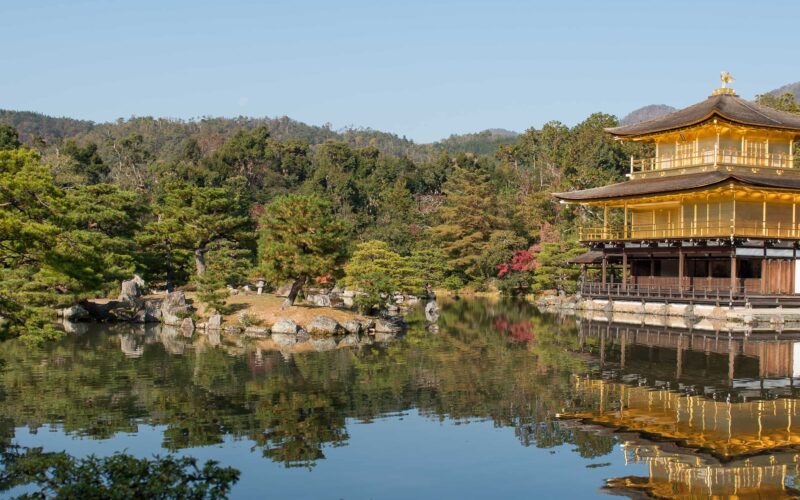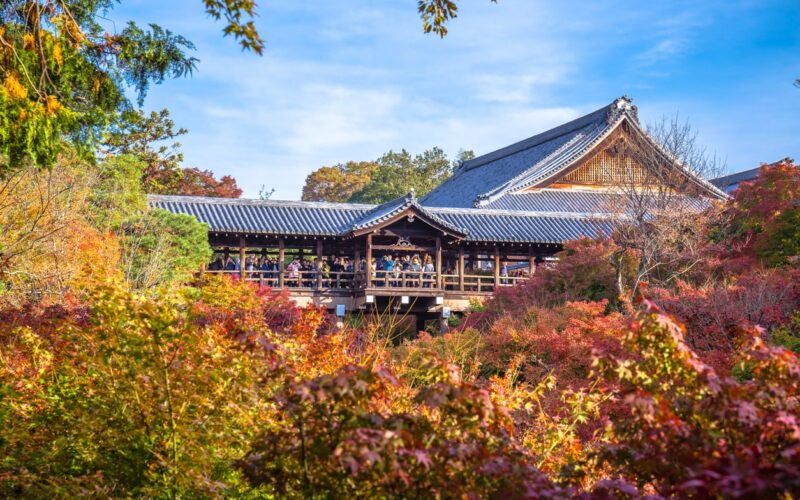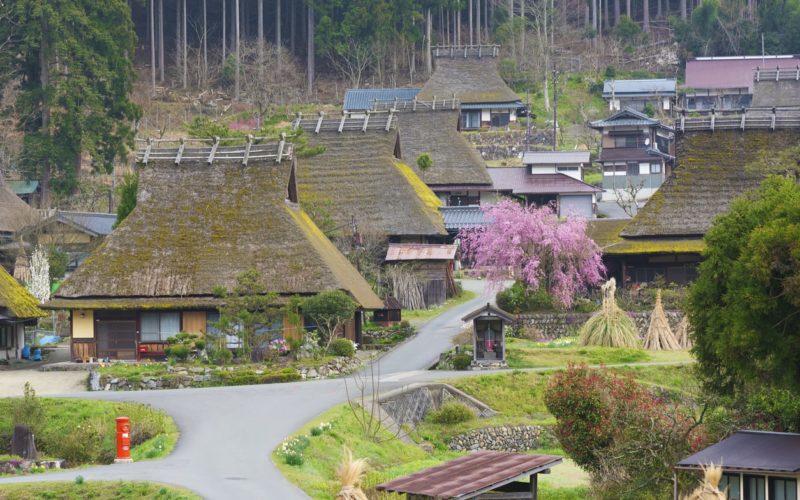Ginkakuji (Silver Pavilion)
Walk the Philosopher's Path at this Kyoto temple that proves all that glitters truly isn't gold.
The brother temple to Kyoto’s famous Golden Pavilion (Kinkaku-ji), the Silver Pavilion (Ginkaku-ji) doesn’t actually have any silver applied to its exterior. It’s precisely this lack of adornment that makes it special. In its understated elegance, Ginkaku-ji embodies the Japanese aesthetic of wabi-sabi—the art of finding beauty in imperfection.
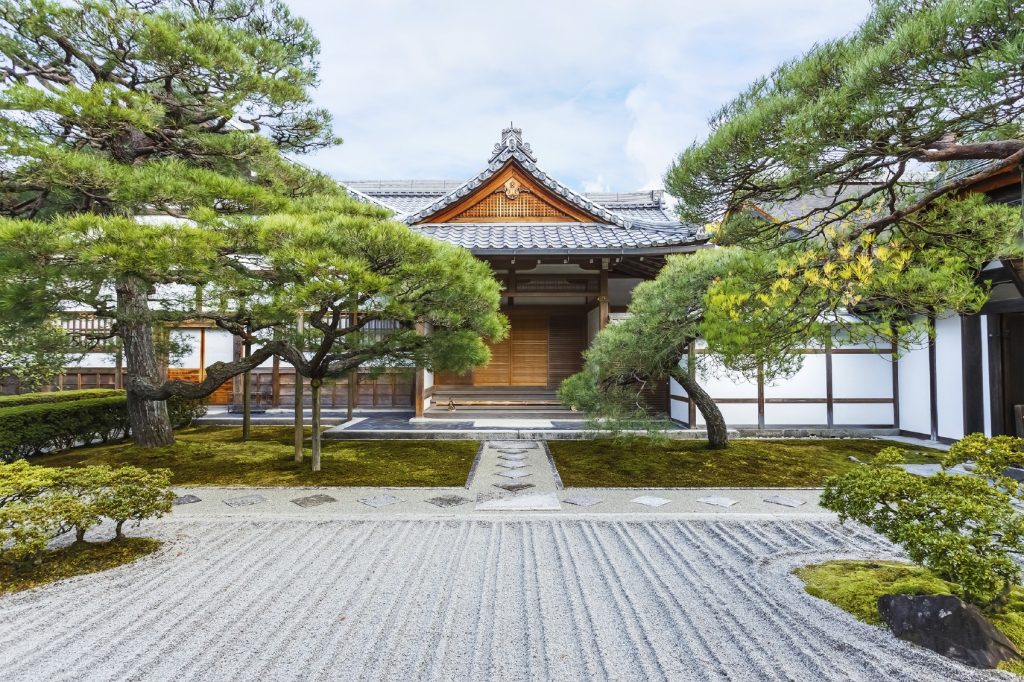
Wabi-sabi is an aesthetic based on accepting the natural cycle of growth, decay, and death.
Ginkaku-ji’s gardens
Buried in the shadows of Higashiyama’s mountain range, Ginkaku-ji oozes wabi-sabi everywhere from its faded, wooden panels once varnished in black lacquer to its stone garden that invokes a feeling of cleansing and renewal.
The dry garden known as the “Sea of Silver Sand,” is one of the temple’s most interesting features. Raked white sand leads to a towering cone that was landscaped to be a perfect spot for moon gazing.
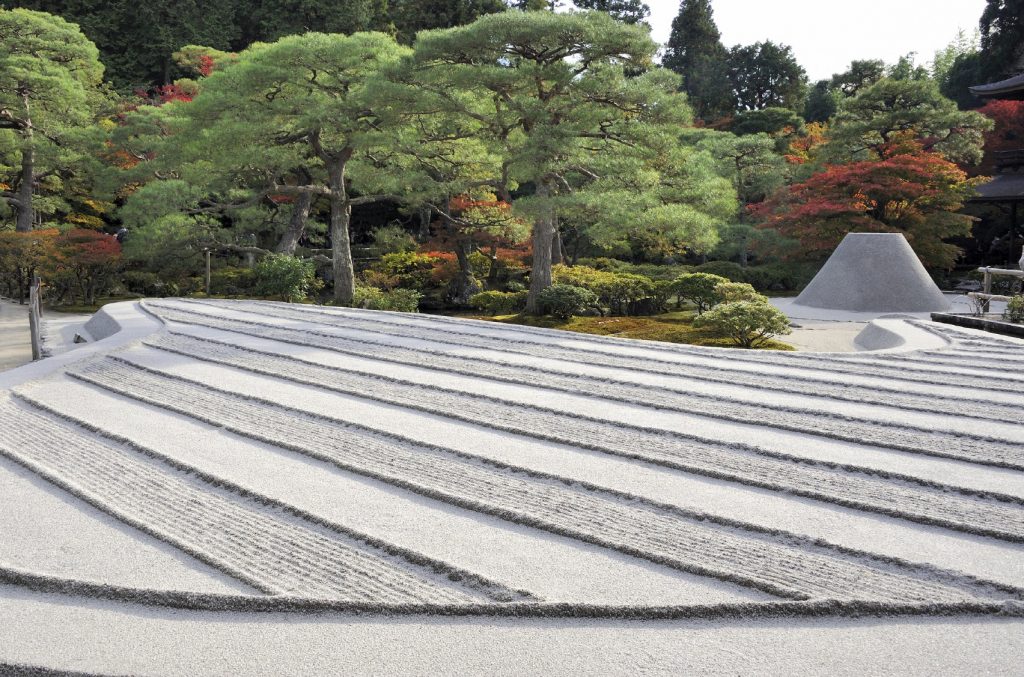
See the Sea of Silver Sand.
The dry garden is modeled after a celebrated lake near Hangzhou, China while the sand pyramid is the mirror-image of Mount Fuji. Both sand shapes are religious metaphors for enlightenment, with the moon and its reflection symbolizing an illumination of consciousness. Ginkaku-ji’s moss garden reflects beauty in the inevitable aging process, otherwise known in Zen as impermanence.
5 Famous Foods in Kyoto
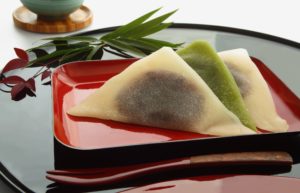
The Philosopher’s Path
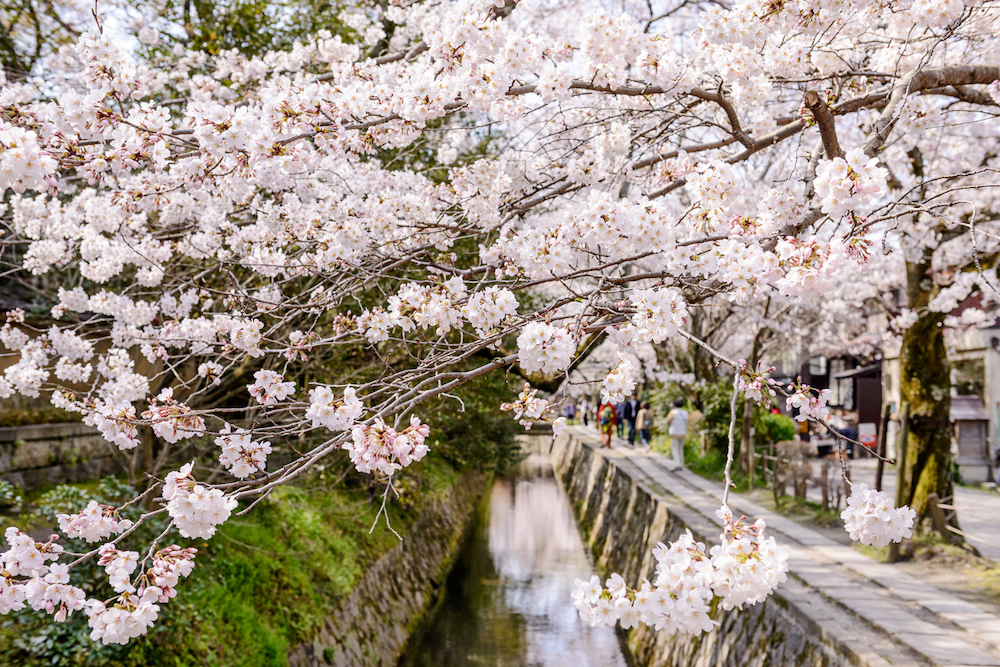
Don’t miss the Philosopher’s Path while you’re at Ginkakuji.
Embodying that feeling of zen even further is the attached Philosopher’s Path, a two-kilometer long stone walkway leading to the Nanzen-ji neighborhood. During spring, cherry blossoms bloom along the path covering it in soft pink and white petals.
Ironically, this brings hoards of people clamoring for a glimpse of the fleeting flowers—the complete opposite of zen. However, it’s still worth visiting as a serene stroll here removes you from the chaos of big city life, just for a moment.
Trivia

Topics: cherry blossoms, kyoto, shrines and temples
